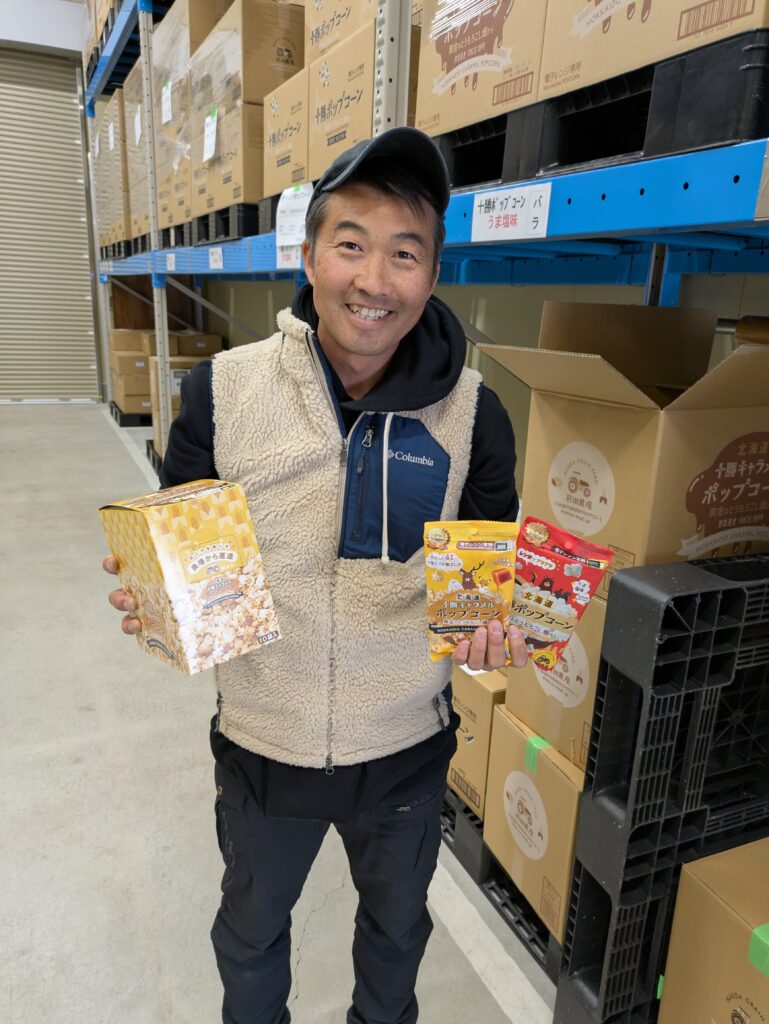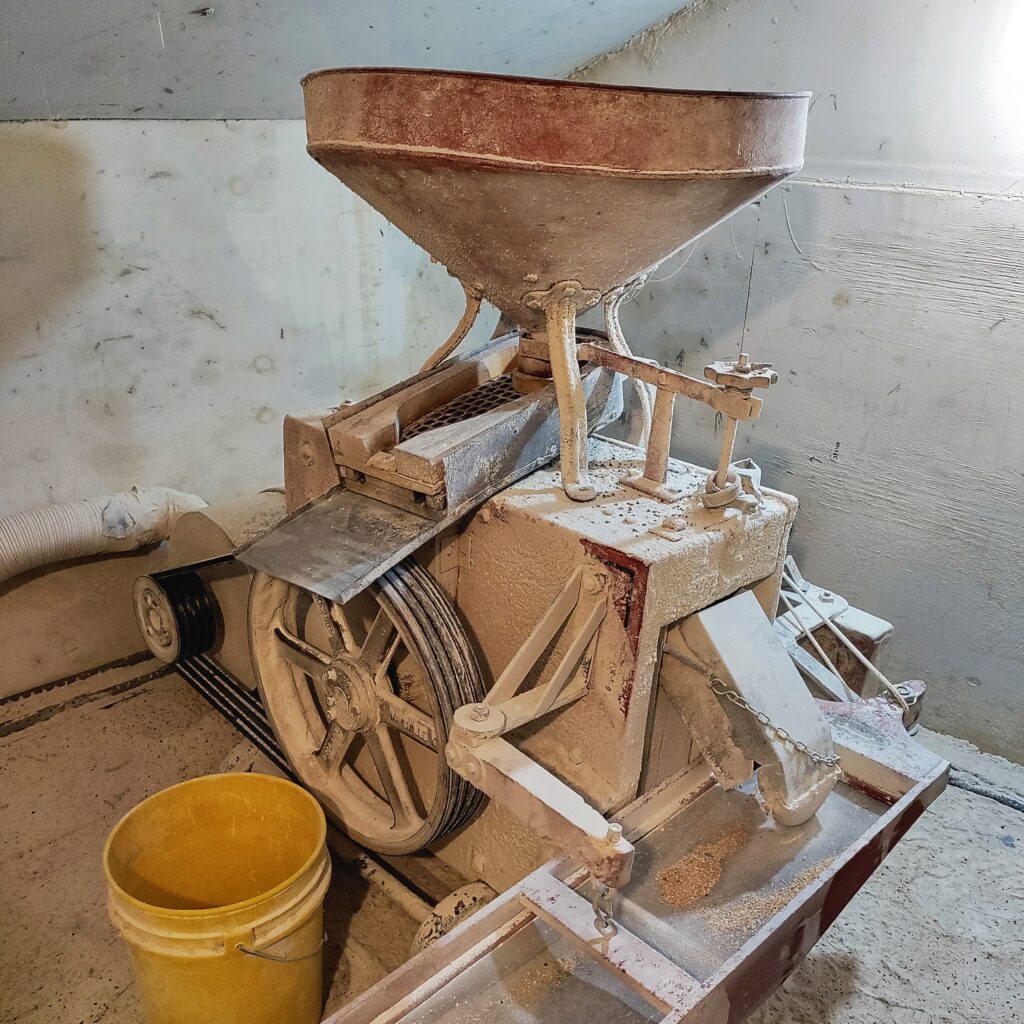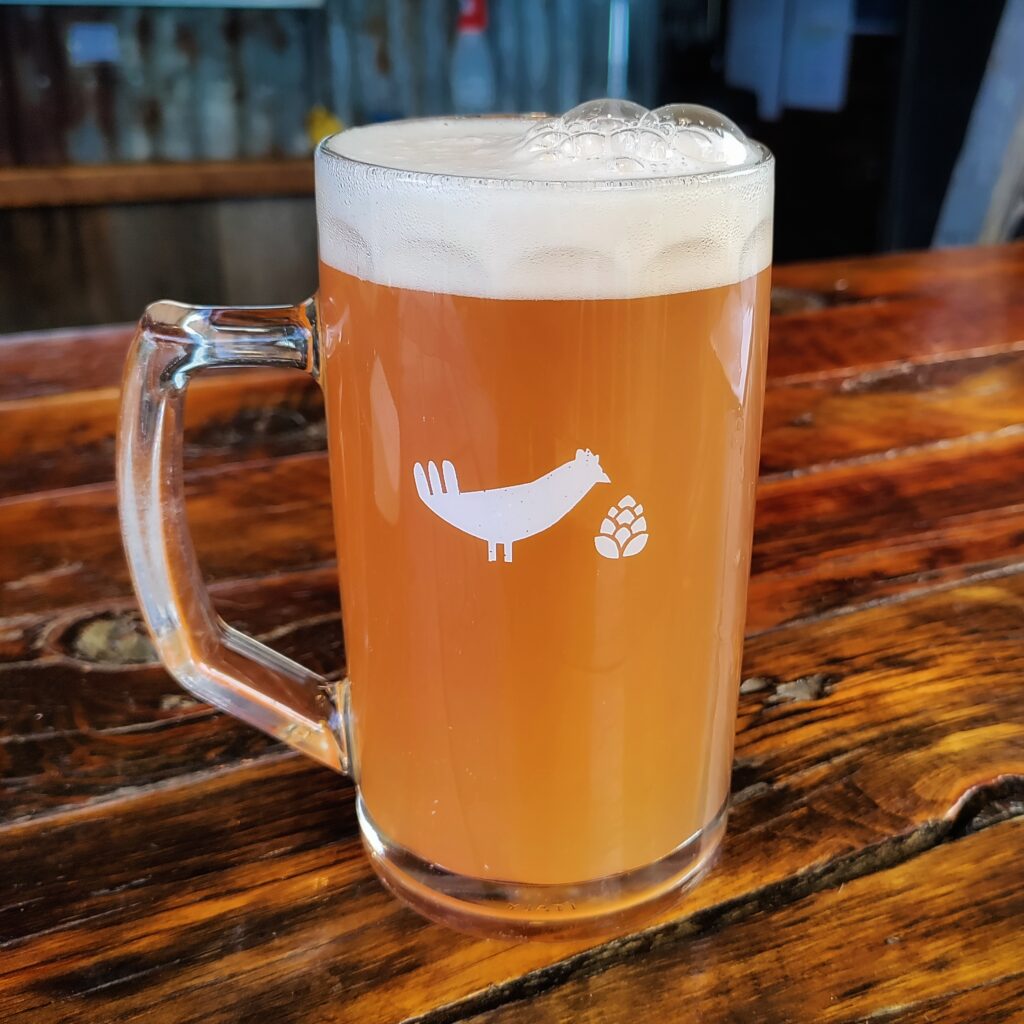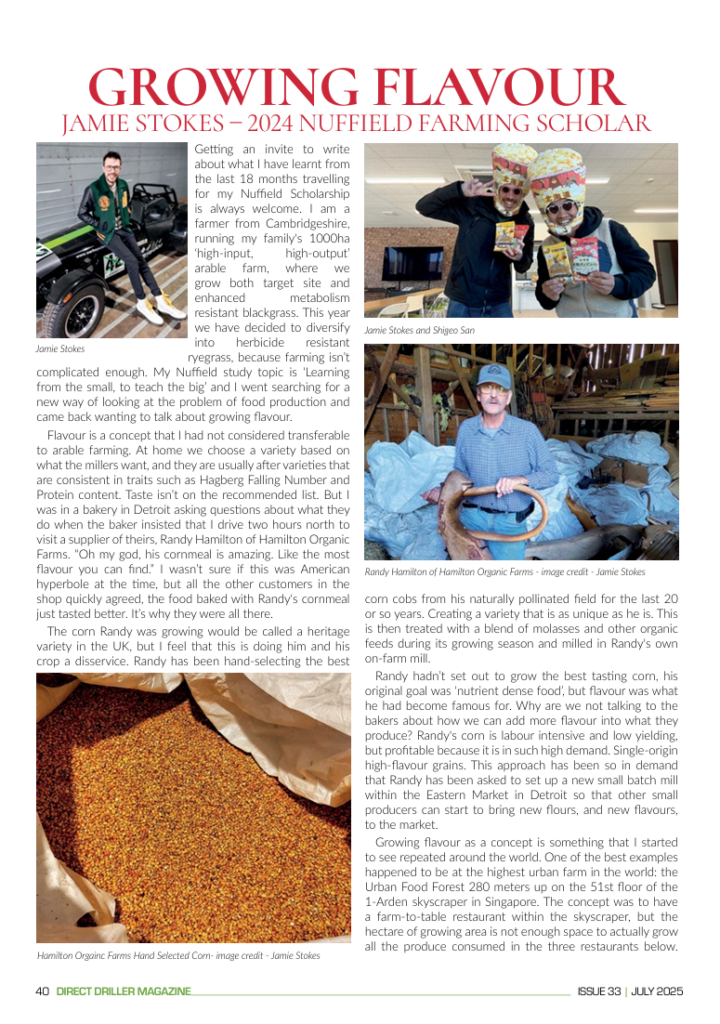Jamie Stokes – 2024 Nuffield Farming Scholar
Getting an invite to write about what I have learnt from the last 18 months travelling for my Nuffield Scholarship is always welcome. I am a farmer from Cambridgeshire, running my family’s 1000ha ‘high-input, high-output’ arable farm, where we grow both target site and enhanced metabolism resistant blackgrass. This year we have decided to diversify into herbicide resistant ryegrass, because farming isn’t complicated enough. My Nuffield study topic is ‘Learning from the small, to teach the big’ and I went searching for a new way of looking at the problem of food production and came back wanting to talk about growing flavour.
Flavour is a concept that I had not considered transferable to arable farming. At home we choose a variety based on what the millers want, and they are usually after varieties that are consistent in traits such as Hagberg Falling Number and Protein content. Taste isn’t on the recommended list. But I was in a bakery in Detroit asking questions about what they do when the baker insisted that I drive two hours north to visit a supplier of theirs, Randy Hamilton of Hamilton Organic Farms. “Oh my god, his cornmeal is amazing. Like the most flavour you can find.” I wasn’t sure if this was American hyperbole at the time, but all the other customers in the shop quickly agreed, the food baked with Randy’s cornmeal just tasted better. It’s why they were all there.

The corn Randy was growing would be called a heritage variety in the UK, but I feel that this is doing him and his crop a disservice. Randy has been hand-selecting the best corn cobs from his naturally pollinated field for the last 20 or so years. Creating a variety that is as unique as he is. This is then treated with a blend of molasses and other organic feeds during its growing season and milled in Randy’s own on-farm mill.
Randy hadn’t set out to grow the best tasting corn, his original goal was ‘nutrient dense food’, but flavour was what he had become famous for. Why are we not talking to the bakers about how we can add more flavour into what they produce? Randy’s corn is labour intensive and low yielding, but profitable because it is in such high demand. Single-origin high-flavour grains. This approach has been so in demand that Randy has been asked to set up a new small batch mill within the Eastern Market in Detroit so that other small producers can start to bring new flours, and new flavours, to the market.
Growing flavour as a concept is something that I started to see repeated around the world. One of the best examples happened to be at the highest urban farm in the world: the Urban Food Forest 280 meters up on the 51st floor of the 1-Arden skyscraper in Singapore. The concept was to have a farm-to-table restaurant within the skyscraper, but the hectare of growing area is not enough space to actually grow all the produce consumed in the three restaurants below. Instead, they chose to companion crop around 150 different herbs and spices with fruit trees and some vegetable plants. These plants are chosen in a collaborative effort between the chefs and the farm team so that the flavour of the dishes served in the restaurants is actually grown in the skyscraper, not the calories. The Food Forest is also open to members of the public who eat in the restaurant, enabling engagement with where the flavours they experience come from.
Whilst trying to make sense of how growing grains for flavour might work in the UK I headed to the pub, where all good thinking happens. Specifically, I was at the Goodlot brewery in Ontario, Canada and written above the bar was “This beer can only taste like this, because it was made here”. It took two pints before it clicked that what they were talking about was terroir, which all wine lovers know is the all-encompassing word for the environment in which a particular wine is produced. Wine growers talk about terroir with such reverie, how only their soil, on their hill with its own microclimate can produce such a flavour. Well, if a beer can also have terroir and Randy’s corn arguably does, does wheat?



The answer to that takes us all the way to Japan to speak to Shigeo-san, a man famous for popcorn. I flew north from Tokyo to the island of Hokkaido to learn about Japan’s only microwave popcorn business. Originally an idea to keep his staff employed whilst the ground on his farm is frozen over the winter (up to a meter deep usually!), all of his corn is now packaged and sent around the world from a state-of-the-art factory that no longer employs the farm team. But in the corner of his distribution facility was something a little more familiar, flour packaged up in one and ten kilogram bags.
He grows four different wheat varieties on his farm; Kitahonami, Harukirari, Kitanokarori and Haruyokoi, and has them milled individually. Currently 60% of his flour is sold on the wholesale market by traders, a similar process to selling grains in the UK. The remainder is packaged up as individual-variety single-origin flour, most going direct to bakers but currently around 10% of his flour is sold to the public through his website.



Japan is a nation that is very proud of its produce, and perfection in both look and taste is almost worshiped. Shigeo-san has tapped into a market where being able to say exactly where the produce has come from is a bonus, but getting a unique flavour profile and elevating your baked goods is the goal. Having started out small, this market in Japan is growing, with increasing numbers of bakers wanting his single-origin flour. With the knock-on effect of at home bakers wanting more and more of it to replicate what they buy at home.
Can we replicate this back in the UK? I would love to walk into a local bakery and see the farmhouse loaf made with Cambridgeshire Skyfall for taste and the cob used Zyatt from Yorkshire because it makes a better crust, but I have my suspicions that the buying public aren’t ready for that yet. They are still buying strawberries in December when they taste of precisely nothing.


